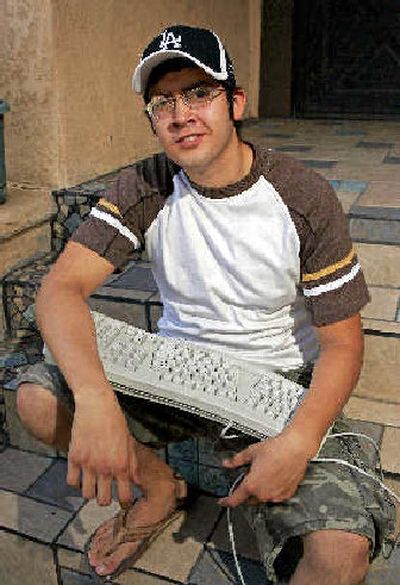New test measures Web wisdom

LONG BEACH, Calif. — Students apply to college online, e-mail their papers to their professors and, when they want to be cheeky, pass notes in class by text-messaging.
But that doesn’t necessarily mean they have a high Internet IQ.
“They’re real comfortable instant-messaging, downloading MP3 files. They’re less comfortable using technology in ways that require real critical thinking,” says Teresa Egan of the Educational Testing Service.
Or as Lorie Roth, assistant vice chancellor of academic programs at California State University puts it: “Every single one that comes through the door thinks that if you just go to Google and get some hits — you’ve got material for your research paper right there.”
That’s why Cal State and a number of other colleges are working with ETS to create a test to evaluate Internet intelligence, measuring whether students can locate and verify reliable online information and whether they know how to properly use and credit the material.
“This test measures a skill as important as having mathematics and English skills when you come to the university,” says Roth. “If you don’t come to the university with it, you need to know that you are lacking some skills that educated people are expected to have.”
A preliminary version of the new test, the Information and Communication Technology Literacy Assessment, was given to 3,300 Cal State students this spring to see how well it works, i.e. testing the test. Individual scores aren’t being tallied but campuses will be getting aggregate reports.
Next year, the test is expected to be available for students to take on a voluntary basis.
Cal State is the lead institution in a consortium which includes UCLA, the University of Louisville, the California Community College System, the University of North Alabama, the University of Texas System and the University of Washington.
Some of the institutions involved are considering using the test on incoming students to see if they need remedial classes, says Egan, ETS’ project manager for the Information and Communication Technology Literacy Assessment. Other schools are thinking about giving the test as a follow up to communications courses to gauge curricula efficiency.
Robert Jimenez, a student at Cal State-Fullerton who took the prototype test this spring, gives it a passing grade. “It was pretty good in that it allowed us to go ahead and think through real-life problems.”
Sample questions include giving students a simulated page of Web search results on a particular subject and asking students to pick the legitimate sources. So, a question on bee sting remedies presents a choice of sites ranging from ads to a forum for herb treatments to (the correct answer) a listing from the National Institutes of Health, identifiable by having “nih” in the URL (site address) along with the “.gov” suffix that connotes an official government listing.
High tech has been a fixture of higher ed for some years.
A 2002 report from the Pew Internet & American Life Project found that 79 percent of college Internet users thought the Internet had a positive impact on their academic experience.
More than 70 percent used the Internet more than the library and 56 percent said e-mail improved their relationships with professors.
Of course, some of those text-messaging students are still being taught by professors whose idea of a personal data assistant is a fresh pad of Post-Its.
“The problem with technology and education is how do you fit the new technology into existing curriculum lesson plans. You can’t add more class time and it’s much easier to just keep teaching the way you were,” says Steve Jones, a co-author on the Pew study and a communications professor at the University of Illinois at Chicago.
Jones folds lessons on Internet use into his classes. And he doesn’t mince words about students who try the “click, copy and paste” approach to homework.
“I tell the students, `Some of you are going to put off this paper until the night before. You’re going to go to Google, type in search words and just look at the top five hits and use those. I’m going to grade you on this. I’m going to look at these sources and so let’s talk about how to evaluate sources.”’